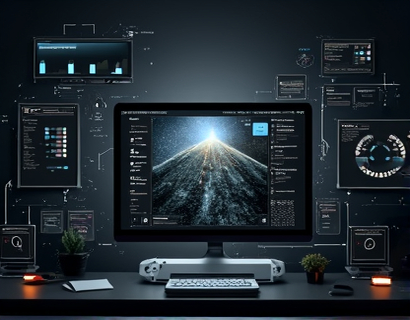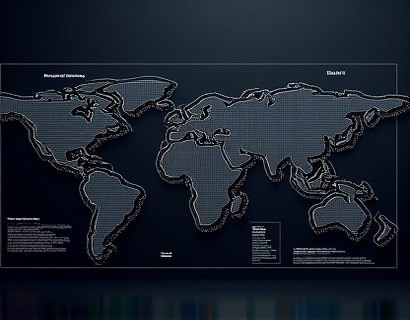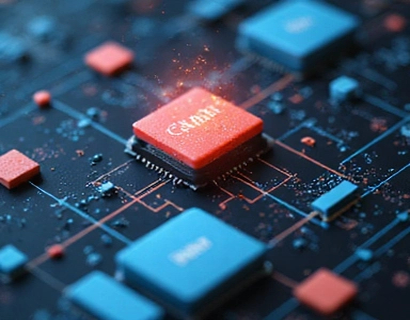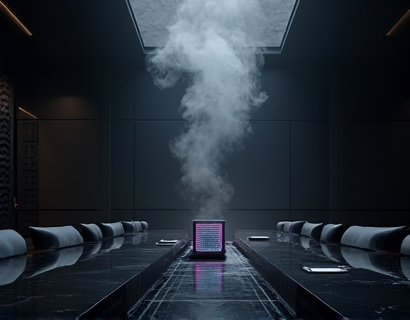AI Chat Interface: Your Quickest Path to Construction Expertise and Project Success
In the fast-paced world of construction, project managers and professionals are constantly seeking ways to enhance efficiency, streamline decision-making, and stay updated with industry trends. The advent of technology has brought forth innovative solutions, one of which is the AI chat interface. This tool serves as a bridge between construction professionals and the wealth of information available in the industry, providing instant expert insights on build services and trends. By integrating an AI chat interface into construction project management, stakeholders can elevate their workflow and ensure project success.
The Role of AI in Construction
Artificial Intelligence (AI) has revolutionized various sectors, and construction is no exception. The integration of AI technologies in construction management has led to improved project outcomes, reduced costs, and enhanced safety measures. AI can analyze vast amounts of data, predict project risks, and provide actionable insights that help in making informed decisions. The AI chat interface is a user-friendly application that allows construction professionals to tap into this wealth of information quickly and efficiently.
Understanding AI Chat Interfaces
An AI chat interface is a conversational agent that uses natural language processing (NLP) to interact with users. It can understand and respond to queries in real-time, making it an invaluable tool for construction professionals who need quick answers to complex questions. Whether it's about building codes, material specifications, or industry best practices, an AI chat interface can provide instant access to expert knowledge, thereby saving time and reducing the burden on project managers.
Benefits of Using an AI Chat Interface in Construction
1. Instant Access to Information
One of the primary advantages of an AI chat interface is the ability to access information instantly. Construction professionals often face time-sensitive decisions that require immediate answers. With an AI chat interface, users can ask questions and receive responses in real-time, eliminating the need to sift through manuals or wait for expert consultations.
2. Streamlined Decision-Making
In construction, decision-making can be complex, involving multiple stakeholders and various factors. An AI chat interface simplifies this process by providing relevant information quickly. By having access to expert insights at their fingertips, project managers can make informed decisions that align with project goals and timelines.
3. Enhanced Workflow Efficiency
Workflow efficiency is crucial in construction projects, where delays can lead to increased costs and missed deadlines. An AI chat interface can help streamline workflows by automating routine inquiries and providing quick answers to common questions. This allows project teams to focus on more critical tasks, ultimately improving overall productivity.
4. Continuous Learning and Adaptation
AI chat interfaces are designed to learn and adapt over time. As they interact with users, they gather data and insights that help improve their responses. This continuous learning process ensures that the information provided is up-to-date and relevant, keeping construction professionals informed about the latest industry trends and best practices.
5. Cost-Effective Solution
Implementing an AI chat interface can be a cost-effective solution for construction companies. By reducing the need for extensive training and minimizing the time spent on information retrieval, companies can save on labor costs. Additionally, the ability to make informed decisions quickly can lead to cost savings in project execution.
Key Features of an AI Chat Interface for Construction
1. Natural Language Processing
The ability to understand and process natural language is a fundamental feature of AI chat interfaces. This allows users to communicate in a conversational manner, making it easier to ask questions and receive relevant answers without needing to use technical jargon.
2. Knowledge Base Integration
An effective AI chat interface should be integrated with a comprehensive knowledge base that includes information on building codes, materials, construction techniques, and industry standards. This ensures that users receive accurate and reliable information tailored to their specific queries.
3. User-Friendly Interface
A user-friendly interface is essential for encouraging adoption among construction professionals. The chat interface should be intuitive, allowing users to navigate easily and find the information they need without frustration.
4. Multi-Platform Accessibility
Construction professionals often work in various environments, from job sites to offices. An AI chat interface should be accessible across multiple platforms, including mobile devices, tablets, and desktops, ensuring that users can access information whenever and wherever they need it.
5. Customization Options
Every construction project is unique, and an AI chat interface should offer customization options to cater to specific needs. This could include tailored responses based on the type of project, location, or specific regulations that apply to the construction site.
Implementing an AI Chat Interface in Your Construction Projects
Integrating an AI chat interface into construction project management requires careful planning and execution. Here are some steps to consider:
1. Identify Your Needs
Before implementing an AI chat interface, it's essential to identify the specific needs of your construction projects. Consider the types of questions that arise frequently and the information that would be most beneficial for your team.
2. Choose the Right Technology
Selecting the right technology is crucial for the success of your AI chat interface. Look for solutions that offer robust natural language processing capabilities, a comprehensive knowledge base, and user-friendly features.
3. Train Your Team
Once the AI chat interface is in place, it's important to train your team on how to use it effectively. Provide guidance on how to ask questions and interpret the responses to maximize the benefits of the technology.
4. Monitor and Evaluate
After implementation, continuously monitor the performance of the AI chat interface. Gather feedback from users to identify areas for improvement and ensure that the system is meeting the needs of your construction projects.
Case Studies: Successful Implementation of AI Chat Interfaces in Construction
Several construction companies have successfully implemented AI chat interfaces to enhance their project management processes. Here are a few examples:
1. Large-Scale Infrastructure Project
A major infrastructure project utilized an AI chat interface to streamline communication among project managers, engineers, and subcontractors. The interface provided instant access to project specifications, safety regulations, and material requirements, significantly reducing the time spent on information retrieval and improving overall project coordination.
2. Residential Construction Firm
A residential construction firm integrated an AI chat interface to assist with customer inquiries. Homebuyers could ask questions about the construction process, timelines, and design options, receiving immediate responses. This not only improved customer satisfaction but also freed up project managers to focus on more complex tasks.
3. Commercial Building Project
In a commercial building project, an AI chat interface was used to facilitate communication between the design team and contractors. The interface provided real-time updates on design changes, material availability, and scheduling conflicts, ensuring that all stakeholders were aligned and informed throughout the project lifecycle.
Future Trends in AI Chat Interfaces for Construction
The future of AI chat interfaces in construction looks promising, with several trends expected to shape their development:
1. Increased Personalization
As AI technology continues to evolve, chat interfaces will become more personalized, offering tailored responses based on user preferences and past interactions. This will enhance the user experience and provide even more relevant information.
2. Integration with Other Technologies
AI chat interfaces will increasingly integrate with other technologies, such as Building Information Modeling (BIM) and project management software. This will create a seamless flow of information, allowing users to access data from multiple sources through a single interface.
3. Enhanced Predictive Capabilities
Future AI chat interfaces will likely incorporate advanced predictive analytics, enabling them to anticipate user needs and provide proactive recommendations. This could help construction professionals stay ahead of potential issues and make more informed decisions.
4. Voice-Activated Interfaces
As voice recognition technology improves, we can expect to see the rise of voice-activated AI chat interfaces in construction. This will allow users to interact with the system hands-free, making it even more convenient for professionals working on job sites.
Conclusion
The integration of an AI chat interface into construction project management represents a significant advancement in the industry. By providing instant access to expert insights, streamlining decision-making, and enhancing workflow efficiency, AI chat interfaces empower construction professionals to achieve project success. As technology continues to evolve, the potential for AI chat interfaces in construction will only grow, paving the way for a more efficient and informed industry.









































